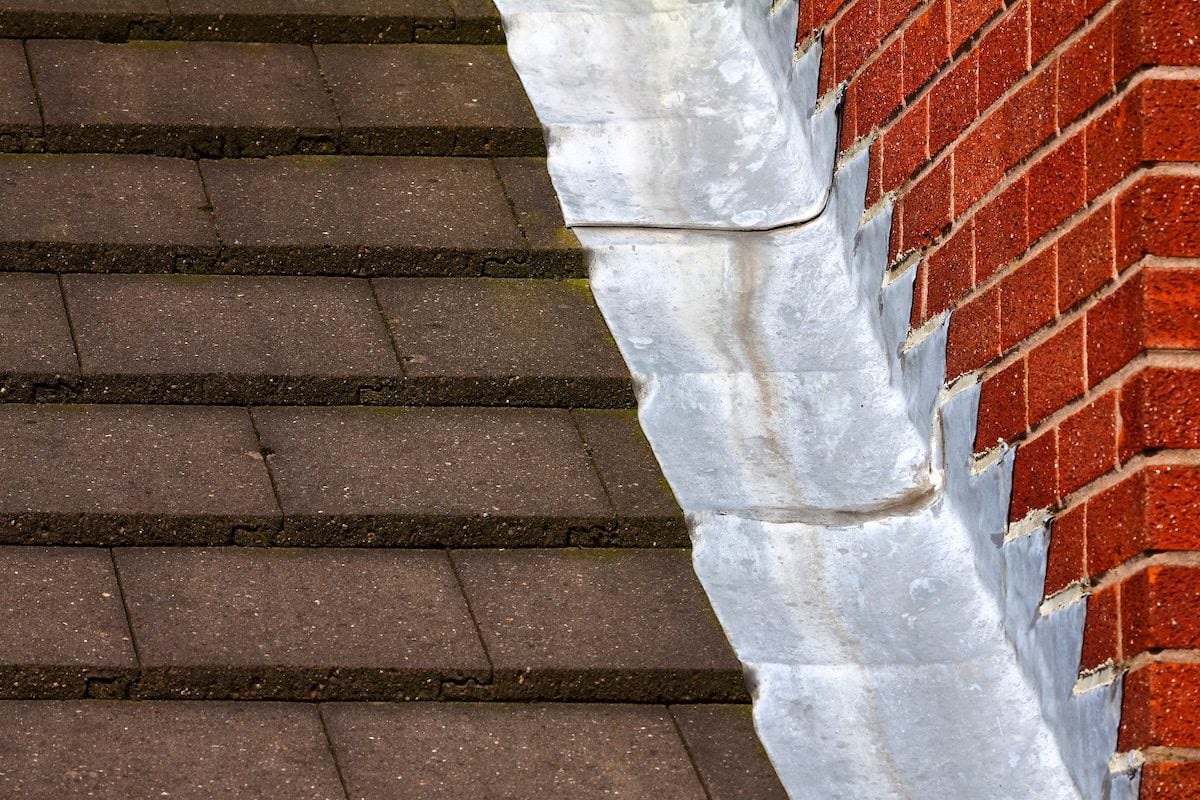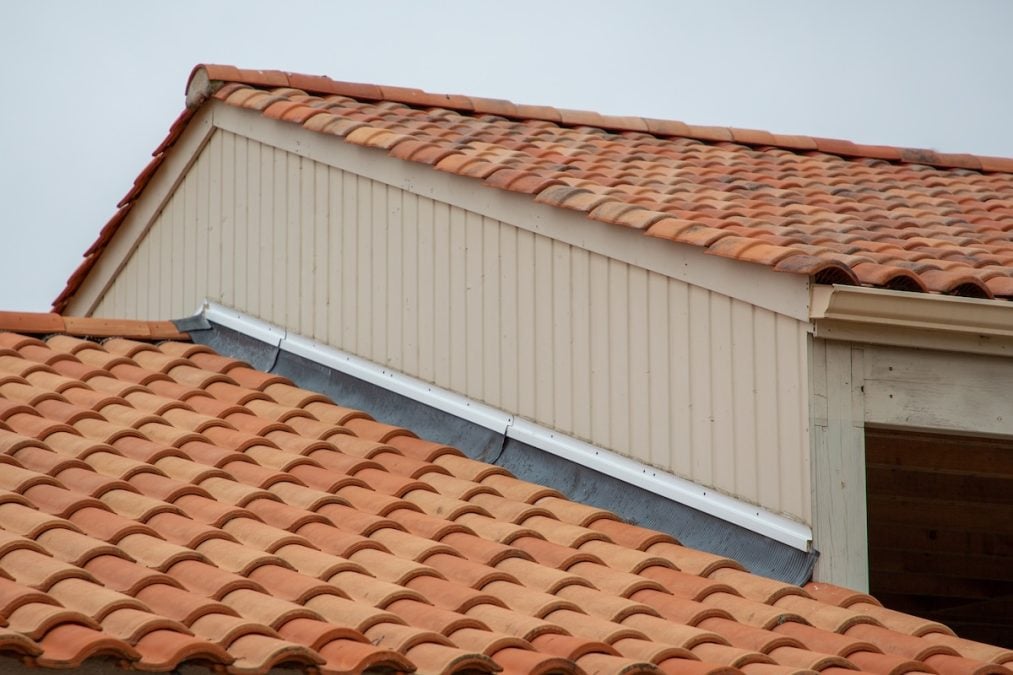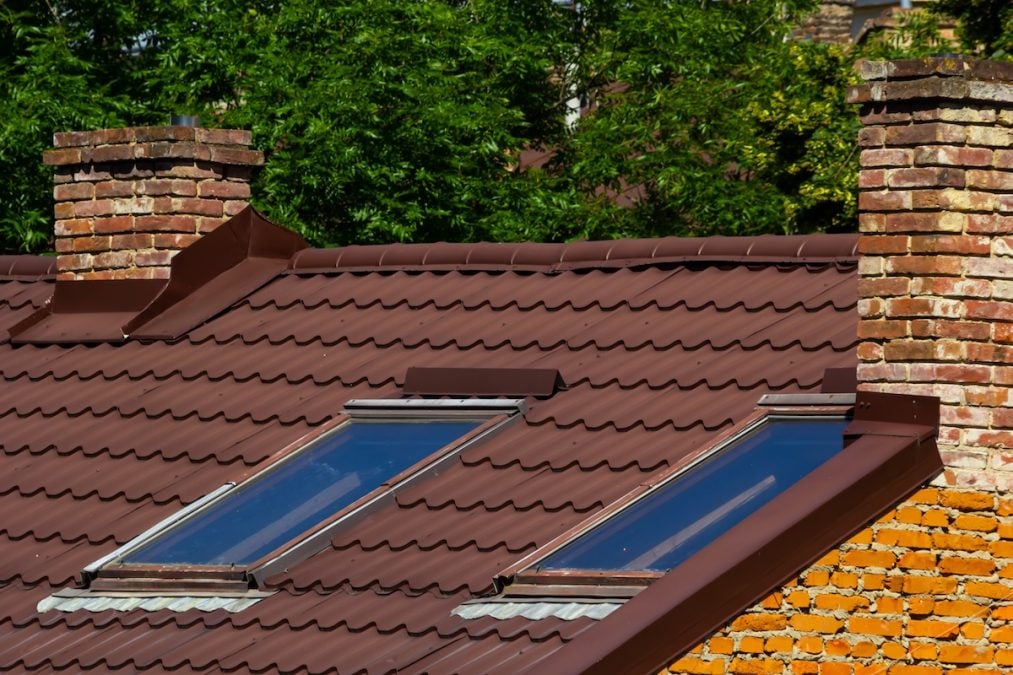
What Is Roof Flashing? (7 Best Types, Functions, & More)
Whether you’re a homeowner planning a renovation or a construction enthusiast looking to broaden your knowledge, understanding roof flashing is essential. Roof flashing is a small but mighty component of any roofing system, playing a key role in protecting your home from water damage and structural issues. This guide will cover:
- What roof flashing is and why it’s important.
- The types of roof flashing you need to know.
- How roof flashing functions to protect your roofing system.
🤔 What Is Roof Flashing

Roof flashing is a thin material, typically made of metal or plastic, installed in vulnerable areas of your roof to prevent water from seeping into joints or spaces. It is most commonly found around chimneys, roof vents, skylights, dormers, and other roof intersections.
Think of it as your roof’s first line of defense against water infiltration. Without proper flashing, rainwater and melted snow can make their way into your home, causing damage to insulation, drywall, and even the structural integrity of the roof itself.
Why Roof Flashing Matters
Roof flashing is the unsung hero of any roofing system for several reasons:
- Prevents leaks: Flashing directs water away from areas where two surfaces meet, significantly reducing the risk of leaks.
- Protects structural integrity: By preventing water seepage, flashing keeps your roof’s foundation and interior walls protected.
- Minimizes maintenance costs: Proper flashing saves you from expensive water damage repairs down the line.
- Enhances roof life: A well-installed flashing system boosts the overall longevity of your roof.
⭐️ 7 Types of Roof Flashing

There are several types of roof flashing, each designed to address specific areas of vulnerability. Below is a breakdown of the most commonly used types:
1. Step Flashing
Step flashing is a crucial component installed where the roof meets a vertical wall, such as the side of a house or a dormer window. It is applied in a layered, “step” formation, with each piece overlapping the one below it. This design ensures that water is effectively directed away from the wall and onto the roof surface, preventing leaks. Step flashing is typically made from durable materials like aluminum or galvanized steel, as it needs to withstand harsh weather conditions.
Example: It is most commonly used around chimneys, dormers, and skylights, ensuring these areas are well-protected from water infiltration.
2. Valley Flashing
Valley flashing is installed in the valleys of a roof—where two roof planes meet to form a low point. These areas are particularly prone to water pooling and damage since they naturally channel rainwater and snow runoff. Valley flashing is usually made of metal and sits beneath the roofing material to create a watertight barrier. It ensures that water flows smoothly toward the gutters instead of seeping into the roof structure, preventing rot and leaks. Properly installed valley flashing is essential for maintaining the overall health of your roof.
3. Chimney Flashing
Chimneys are one of the most leak-prone areas on a roof due to their size and the way they puncture through the roofing system. Chimney flashing is installed to seal the gap between the chimney and the roof, creating a watertight barrier. It often involves the use of step flashing along the sides of the chimney combined with counter flashing on top to provide an additional layer of protection. This dual-layer system ensures long-lasting durability, even in heavy rain or snow. Regular inspection and maintenance of chimney flashing are essential to prevent water from infiltrating your home through this critical area.
4. Vent Pipe Flashing
Vent pipes, which allow plumbing systems to vent air outside, require specialized flashing to prevent leaks. Vent pipe flashing is a waterproof material that seals the area where the pipe exits through the roof. These flashings often feature a rubber boot designed to create a snug, watertight fit around the pipe. The rubber boot flexes with temperature changes and movements, maintaining the seal over time. Properly installed vent pipe flashing prevents water from seeping into the roof decking and causing damage, making it an essential component of a well-sealed roofing system.
5. Drip Edge Flashing
Drip edge flashing is a thin metal strip installed along the edges of a roof to protect the roof deck and fascia board from water damage. Its primary purpose is to guide rainwater and melting snow into the gutters, preventing water from dripping onto the fascia or pooling near the roof’s edge. Drip edge flashing also helps to stabilize the roofing material at the edges, reducing the risk of shingles or tiles lifting during strong winds. By keeping water away from vulnerable areas, drip edge flashing adds an extra layer of protection to extend the life of your roof and reduce maintenance costs.
6. Continuous Flashing
Also known as apron flashing, continuous flashing is a long, unbroken strip of metal designed to protect areas of the roof where a vertical surface, like a wall, meets a sloped roof. Unlike step flashing, which is applied in segments, continuous flashing provides a seamless barrier against water infiltration. It is especially useful for protecting lower sections of the roof, such as where a roof meets a chimney or dormer. To enhance effectiveness, continuous flashing is often bent at an angle to tightly conform to the roof and wall, creating a watertight seal.
7. Counter Flashing
Counter flashing is typically installed in conjunction with other types of flashing, such as step flashing or chimney flashing, to create an additional layer of defense against water intrusion. It is placed above the base flashing, overlapping it to cover any gaps or seams that could allow water to seep in. Counter flashing is commonly used on chimneys and walls, where water tends to collect and pose a risk of leaks. By providing an upper layer of protection, counter flashing works in tandem with the primary flashing to ensure long-term durability and a watertight seal.
🛠️ How Roof Flashing Protects Your Home

Roof flashing functions in various ways to keep your home safe and dry.
Waterproofing
Flashing serves as a critical defense against water intrusion at roof joints, such as chimneys, vents, and skylights. These areas are particularly vulnerable to leaks due to their structural design, but flashing creates an impermeable barrier that redirects water away from these weak points. By channeling water safely off your roof, flashing helps prevent internal damage like mold, rot, and weakened structural integrity. Proper waterproofing with flashing ensures your home remains dry and protected, even in the heaviest downpours.
Weather Resistance
Designed to endure even the harshest weather conditions, flashing provides an essential layer of protection for your roof. Whether it’s torrential rain, heavy snow, or gale-force winds, flashing is built to resist these challenges and keep your roofing system intact. For example, weather in Chesterton can erode weaker materials, but high-quality flashing ensures durability under extreme conditions. By reinforcing your roof against environmental stressors, flashing safeguards your home and keeps repair costs down in the long run.
Seamless Integration
Flashing is designed to work harmoniously with your roof’s materials, whether you have shingles, tiles, or metal roofing. It provides a seamless transition between different roofing components, ensuring water flows off the roof efficiently into your gutter system. This integration prevents pooling or misdirection of water, reducing the risk of damage to your roof or foundation. Properly installed flashing maintains the aesthetic look of your roof while enhancing its functionality, making it an important component in any roofing system.
Long-Lasting Durability
Investing in high-quality flashing pays off in the form of long-lasting durability. Materials such as galvanized steel, aluminum, or copper are specifically chosen for their strength and resistance to corrosion, ensuring your roof remains protected for years to come. Unlike cheaper alternatives, these materials stand up to wear and tear, providing a reliable shield against water and weather damage. By opting for durable flashing, you’re making a long-term investment in your home’s protection and value, reducing the need for frequent repairs or replacements.
🏠 Roof Flashing Guide
When it comes to protecting your home from water damage, roof flashing is a critical component—and Armour Construction is the team you can trust to get it done right. With expert craftsmanship, premium materials, and a commitment to exceptional customer care, we ensure your roofing system is built to last.
Whether you need flashing installation, roof repairs, or a complete replacement, our proven track record speaks for itself. Don’t leave your home’s protection to chance—contact Armour Construction today for a free consultation and let us safeguard your investment with roofing solutions you can rely on!



